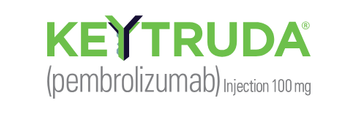
Real-World Lung Cancer Data Links Biomarker Status to Survival and Medication Costs
The study is the first, to the researchers’ knowledge, to evaluate both survival and cost metrics across non-small cell lung cancer biomarker subtypes.
Patients with advanced non–small cell lung cancer (NSCLC) experience markedly different survival outcomes and treatment costs depending on their tumor biomarker status, according to a new study led by
Lung cancer is the
Biomarker-specific therapies have improved outcomes but come at a high cost, contributing to lung cancer’s standing as one of the most expensive cancers to treat. In 2019 alone, out-of-pocket costs in the U.S. totaled an estimated
Tan and colleagues at Yale analyzed data from 26,635 adults diagnosed with NSCLC between 2016 and 2022 using the Flatiron Health database. All patients underwent biomarker testing and received at least one line of therapy. Median follow-up extended through September 2023. The patients were grouped based on the type of biomarker they had. Some had known driver mutations like ALK, BRAF, or EGFR. Others didn’t have these mutations and were instead grouped by their programmed cell death ligand 1 (PD-L1) levels.
The main goal of the study was to calculate the total cost of cancer medications over one and two years. The researchers also looked at how much it cost, on average, to keep one person in each group alive for one or two years — a measure the authors called the “cost per survivor.” These calculations factored in both monthly medication costs and the likelihood of surviving over time.
The results showed that patients with certain biomarkers lived longer, on average, than those without. Patients with ALK rearrangements had the longest median overall survival (OS) at nearly 40 months, followed by 27 months for those with EGFR mutations, and those with BRAF variations lived about 19 months. In contrast, patients without driver alterations —s tratified by PD-L1 status — had shorter survival, ranging from about 12 to 16 months.
Medication costs also varied significantly by biomarker group. The average cost to treat a patient for one year was about $120,000, and for two years, about $183,000. However, the “cost per survivor” was consistently higher in patients without driver alterations. For example, it cost approximately $500,000 to keep one patient with low PD-L1 expression alive for two years, compared with about $363,000 for a patient with an ALK rearrangement.
Patients with EGFR variations incurred the highest 1-year medication costs, largely due to maintenance therapy with newer agents, such as Tagrisso (osimertinib). Meanwhile, patients with PD-L1 expression 50% or greater showed improved survival but also higher costs due to prolonged immunotherapy.
The study is the first, to the researchers’ knowledge, to evaluate both survival and cost metrics across NSCLC biomarker subtypes in a large, real-world cohort. Prior studies on this topic have been limited to smaller samples and single biomarker groups.
Study limitations included the exclusion of non-medication cancer costs such as inpatient care, imaging, and diagnostics; regional pricing variation; and lack of adjustment for patient characteristics. Cost estimates were based primarily on Medicare reimbursement rates and supplemented with retail prices as needed.
Despite these constraints, the findings may provide actionable insights for clinicians, policymakers, and payers. “Medication cost per 1-year or 2-year survivor for patients without driver alterations was consistently higher than those with driver alterations, indicating the need to develop cheaper or more effective medications for these patients,” the authors wrote in their conclusion.
Newsletter
Get the latest industry news, event updates, and more from Managed healthcare Executive.





















































